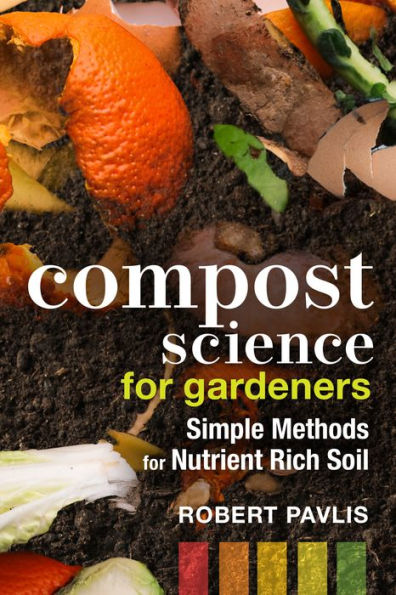Create your own compost and grow better plants.
With breathtaking clarity, Compost Science for Gardeners demystifies composting practices and helps readers determine the best technique for their unique situation. This comprehensive science-based book is your key to building healthier soil and growing better plants.
Using plain language and easy-to-follow instructions, this essential resource distills and blends the latest scientific research with the author's many decades of knowledge and experience into manageable form, debunking a host of common gardening myths along the way. Learn about:
- The role of composting in the ecological cycle
- Compostable materials to incorporate and those to avoid
- Browns and greens vs the carbon-to-nitrogen ratio
- The full range of composting methods, including cold and hot composting; composting in piles, bins, and tumblers; and pit and trench composting
- Keyhole gardening, food digesters, vermicomposting, bokashi, eco-enzyme fermentation, and more
- The relative merits and impact on the environment of each composting technique
- Using finished compost to improve soil health
Anyone can compost. Whether you are a balcony or backyard gardener, market gardener, small-scale farmer, or homesteader, or even if you are simply looking for a way to keep organic matter out of the landfill, this book will show you how to do it simply, safely, and sensibly.
Create your own compost and grow better plants.
With breathtaking clarity, Compost Science for Gardeners demystifies composting practices and helps readers determine the best technique for their unique situation. This comprehensive science-based book is your key to building healthier soil and growing better plants.
Using plain language and easy-to-follow instructions, this essential resource distills and blends the latest scientific research with the author's many decades of knowledge and experience into manageable form, debunking a host of common gardening myths along the way. Learn about:
- The role of composting in the ecological cycle
- Compostable materials to incorporate and those to avoid
- Browns and greens vs the carbon-to-nitrogen ratio
- The full range of composting methods, including cold and hot composting; composting in piles, bins, and tumblers; and pit and trench composting
- Keyhole gardening, food digesters, vermicomposting, bokashi, eco-enzyme fermentation, and more
- The relative merits and impact on the environment of each composting technique
- Using finished compost to improve soil health
Anyone can compost. Whether you are a balcony or backyard gardener, market gardener, small-scale farmer, or homesteader, or even if you are simply looking for a way to keep organic matter out of the landfill, this book will show you how to do it simply, safely, and sensibly.

Compost Science for Gardeners: Simple Methods for Nutrient-Rich Soil
224
Compost Science for Gardeners: Simple Methods for Nutrient-Rich Soil
224eBook
Related collections and offers

Product Details
| ISBN-13: | 9781771423663 |
|---|---|
| Publisher: | New Society Publishers |
| Publication date: | 01/24/2023 |
| Series: | Garden Science Series , #3 |
| Sold by: | Barnes & Noble |
| Format: | eBook |
| Pages: | 224 |
| File size: | 13 MB |
| Note: | This product may take a few minutes to download. |
